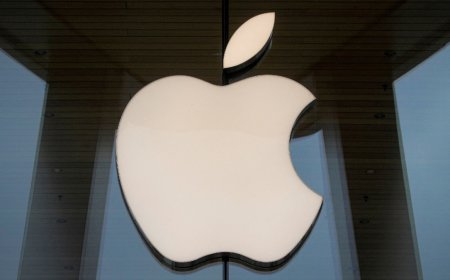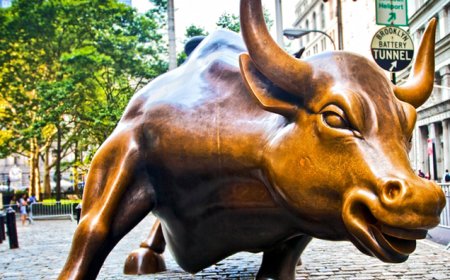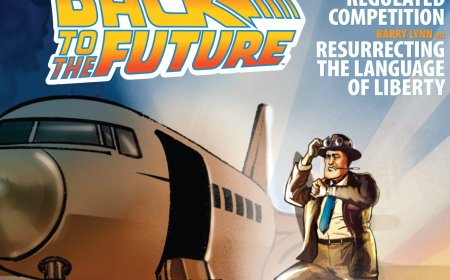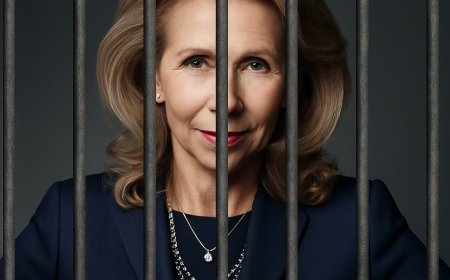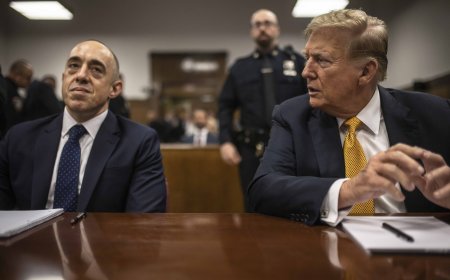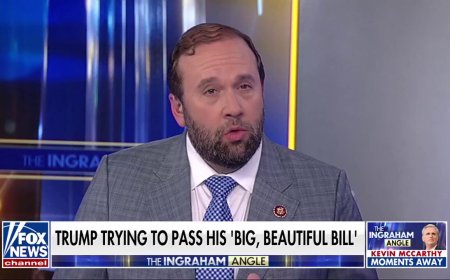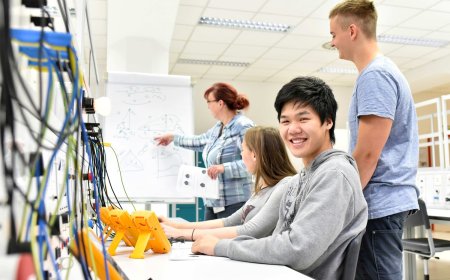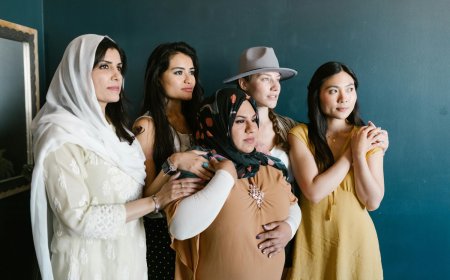What America Can Learn From Tulsa


In March 2019, I arrived in Tulsa for the first of what would become a long series of visits. A local philanthropic foundation, the George Kaiser Family Foundation (GKFF), had invited me to see their urban revitalization program, which they hoped would bring people and investment back to the post-industrial city reeling from the decline of its energy industry. Having studied and worked in economic development for four decades as an academic and consultant, I expected to be shown the standard playbook for community leaders who want to encourage growth. I would be walked through an incubator that lured tech companies to Tulsa. I would be ushered through new arts centers and parks. I would hear about the foundation’s successful remote worker program and about investment in local industry. All of these programs serve a traditional model that seeks to build by attracting new money and people from outside.
As it happens, the Kaiser Foundation is doing all of those things. But I was wrong about our first tour stops, and about the foundation’s vision as well—wrong in a way that would forever change my understanding of the field that I have devoted my professional life to.
I was greeted by Brandon Oldham, a dynamic young program officer at GKFF and a native Tulsan who was the first in his family to attend college. To my surprise, our first destination wasn’t the foundation’s offices or the site of one of its economic development initiatives, but the historic Greenwood neighborhood, once known as “Black Wall Street” because of its extraordinary number of Black-owned businesses. Then we visited one of the foundation’s early childhood development centers, where we were joined by GKFF’s executive director, Ken Levit, and others. As they told me, early childhood development was GKFF’s original mission. The more recent, more conventional economic initiatives—the ones I had expected to see? Those came later and evolved from that guiding star.
Although I did not realize it at the time, I was seeing the glimmerings of a new model for economic development in the American city. This new approach overcomes the long-running divide between “economic development,” which focuses on things like business recruitment, talent attraction, and job generation, and “community development,” which emphasizes equity and helping the least advantaged. GKFF has joined these seemingly incompatible goals by building a more balanced knowledge economy that also bolsters the fabric of the community.
When the nickel did drop, I saw that they were responding to the same paradoxical development I’d first noticed a decade or so ago—that the unbridled pursuit of innovation and economic growth for their own sake was undermining communities and stoking the flames of social division. In my 2017 book, The New Urban Crisis, I wrote about the trend of deepening economic inequality and unaffordable housing that was doing damage to superstar cities like New York and leading tech hubs like the San Francisco Bay Area, and that would later spread to Sunbelt boomtowns like Miami and Austin. GKFF was trying to build a more inclusive economy that could spare Tulsa from this fate.
While observing and advising GKFF over the next six years, I would develop a profound appreciation for its approach to what I have come to call “community-enhancing economic development.” It will take more time to refine this new paradigm, but the Kaiser Foundation has begun to move the economic needle, improving Tulsa’s track record in attracting talent, adding population, growing jobs, and reducing economic divides. Other communities can learn from this pioneering model and adapt it to their own conditions. This will be especially important as the Trump administration reins in spending across the board, including in the area of economic development.
Tulsa came into existence in the 1820s when the Choctaw, Chickasaw, Seminole, Creek, and Cherokee peoples were forced out of Georgia and Alabama and into the Oklahoma Indian Territory. The trading post and cattle town didn’t attract much white settlement until the 1880s, when the St. Louis–San Francisco Railway arrived. When the first major oil drilling operation began in Oklahoma Territory in 1901, Tulsa’s population had reached about 1,000. Six years later, when the territory became a state, it had swelled to 7,000; by 1912, when the city began calling itself “the Oil Capital of the World,” it had more than doubled, to 18,000. Aviation emerged as another leading industry in the teens, when airplane manufacturers and early airlines opened facilities in the city. By the early 1920s, Tulsa was a bona fide boomtown, with a population of more than 70,000, a downtown filled with corporate headquarters, and leafy residential neighborhoods.
Deepening economic inequality and unaffordable housing were damaging superstar cities like NYC and San Francisco and would later spread to Sunbelt boomtowns like Miami and Austin. The George Kaiser Family Foundation (GKFF) is trying to build a more inclusive economy that could spare Tulsa from this fate.
Among them was Greenwood. In 1921, after a Black man was falsely accused of molesting a white woman, vigilantes descended on the neighborhood and set it on fire. When the smoke cleared, two days later, as many as 300 African Americans had been murdered, 6,000 had been rounded up by the police and National Guard and thrown into internment camps, and nearly 10,000 were homeless. Witnesses reported seeing dynamite dropped onto rooftops from civilian airplanes, giving Tulsa the dubious distinction of being the first American city to be bombed from the air.
By the turn of the 21st century, the volatility of the oil industry had taken a toll; Tulsa’s boom times were distant memories. A 2002 story in The Washington Post, “Tulsa’s Desperate Times, Measures,” painted a bleak portrait:
Tulsa has weathered at least 4,000 layoffs—many in high-paying corporate executive jobs, with no imminent prospect of new development. High-end houses sit empty as the residential real estate market stagnates. The restaurant business is flat, and hotel occupancy is down about 13 percent. More than 150 city positions have been eliminated, and city employees have been forced to accept seven furlough days a year to save money.
Significantly, the article also noted that “Tulsa’s struggle brings with it a unique story: that of a small city with a rich, century-old history of oil, wealth and philanthropy that rivals some of the nation’s largest urban centers.” It is thanks to that legacy that two decades later the city is enjoying an astonishing turnaround. In late 2023, one publication hailed Tulsa as a “City for Creators, Dreamers and Doers,” calling it “a place where it seems they’ve thought of everything—and have the resources to make plans and ideas into reality.” This past fall, The New York Times heralded the unique success of Tulsa’s remote work program, which has settled 3,400 young professionals in the city, according to GKFF. The foundation’s efforts, economists say, are contributing to a turnaround in population and jobs and an overall “brain gain,” reversing a generation of stagnation.
While the GKFF has been the animating force in Tulsa’s economic transformation, the path it charted wasn’t obvious at the start. The foundation’s original mission stems from George Kaiser’s passionate commitment to early childhood development as a way to create economic opportunity for less advantaged people and neighborhoods. Born in Tulsa in 1942 to Jewish refugees from Nazi Germany, he attended public schools and eventually earned a bachelor’s degree and an MBA from Harvard. He went to work at the Kaiser Francis Oil Company, which his father and his uncle had built, assuming its leadership in 1969 when his father suffered a heart attack. In 1991, he bought the Bank of Oklahoma out of receivership from the FDIC and grew his net worth to $16 billion as of 2025. In 2010, he signed on to Bill Gates’s and Warren Buffett’s “billionaires’ giving pledge,” promising to give away half of his wealth through GKFF.
Early on, GKFF avoided getting too involved in economic development, seeing it as the public sector’s responsibility. But it came to recognize that the social problems it was trying to address were also rooted in economic development and required building a more vibrant local economy.
In an essay he wrote for the occasion, he explained the ethos behind his philanthropic work. “I recognized early on that my good fortune was not due to superior personal character or initiative so much as it was to dumb luck. I was blessed to be born in an advanced society with caring parents,” he wrote. “As I looked around at those who did not have these advantages, it became clear to me that I had a moral obligation to direct my resources to help repair that inequity.” Kaiser followed up on that concept with a host of initiatives intended to reverse the generational cycle of poverty. Those included prenatal and family health care, early learning and development for at-risk children, teen pregnancy prevention, parenting and skill development, job and income assistance for families with young children, and alternatives to incarceration for mothers convicted of nonviolent crimes.
To realize this vision, in 2006 GKFF opened the first of its 16 state-of-the art early childhood education centers in Tulsa’s least advantaged neighborhoods, where they continue to serve more than 2,000 kids. Kaiser insisted that the foundation benchmark its programs against other cities’ initiatives, both to evaluate their effectiveness and to ensure that they stay focused on the city’s most pressing problems. Two issues emerged as especially significant contributors to childhood poverty in Tulsa: its high rates of teen pregnancy and female incarceration. The foundation developed clinics, recruited doctors, and helped establish the School of Community Medicine at the University of Oklahoma–Tulsa.
For most economic development agencies and initiatives, recruiting businesses, generating jobs, and attracting talent are the sole objectives. But for GKFF, they were seen as mechanisms for extending opportunity to those without it. The foundation’s unique model of community enhancing economic development evolved out of its original social purpose. In fact, it was built into the foundation’s enabling documents. In a critical move that ensured that its work would be tied to serve the community over the long haul, Kaiser placed his philanthropy under the umbrella of the already existing, though considerably less well endowed, Tulsa Community Foundation.
In its early years, GKFF avoided getting too involved in the nuts and bolts of economic development, seeing that as the responsibility of the public sector. But it came to recognize that the social problems it was trying to address were also rooted in economic development and thus required building a more vibrant economy that could broaden the scope of economic opportunity. The foundation began to expand into economic development, housing, community building, and the arts, music, and culture.
Slowly, a vision developed. At first, according to Jeff Stava, COO of the Tulsa Community Foundation, the philanthropists viewed their efforts at economic development as tangential to GKFF’s mission to provide equal opportunity for young children. “Complementary, but secondary,” he told me. But as they began to see how their supposedly primary work of child care intersected with these new programs, they realized that everything fulfilled one goal. “What all the foundation’s initiatives ultimately reflect is a fundamental belief that the most efficient use of resources is not to alleviate the symptoms of poverty but to address its root causes,” Stava explained. That’s the nub of community-enhancing economic development, which works to combat poverty by building a more inclusive economy that extends economic opportunity to disadvantaged people and neighborhoods.
As GKFF branched into a wider program of economic development, it employed traditional tactics meant to attract businesses and skilled workers, while leavening them with efforts to bring the disadvantaged into the new economy. The foundation launched an incubator and co-working space in a rehabbed warehouse in the city’s Arts District. It created Tulsa Innovation Labs to build and support the city’s high-tech ecosystem. It retained McKinsey & Company to identify Tulsa’s leading industry clusters. Led by a former Tulsan who grew up with GKFF’s Levit, the study, “Tulsa’s Tech Niche,” documented the region’s strengths in the fields of advanced energy technology, cybersecurity, drone operations and testing, virtual health, and data analytics.
Most of the cities that have boomed as tech hubs in recent decades—such as Austin, North Carolina’s Research Triangle, Denver-Boulder, and Seattle—are state capitals, homes to major research universities, or both. Tulsa doesn’t fit that model. So the foundation has buttressed the small but industrious research university it does have, the University of Tulsa, supporting high-tech initiatives like the school’s successful cybersecurity program. The foundation also worked with New York University to create NYU-Tulsa, alongside its affiliates in London, Paris, Shanghai, Abu Dhabi, and Buenos Aires.
Reflecting its commitment to the less advantaged, GKFF realized that the innovation economy is not just about techies, entrepreneurs, and knowledge workers—it offers career pathways for less skilled workers, as well. It invested in new STEM programs at local colleges and a seamless four-year degree program that students at Tulsa Community College could immediately enroll in. It created the Atlas School to train Tulsans in coding and software development, and recruited as its CEO Libby Ediger, a native Oklahoman who had cofounded a successful start-up in Washington, D.C.
Much of the foundation’s efforts in workforce training remains aspirational, however. By 2030, it hopes to draw 20,000 tech jobs to Tulsa, with a third going to people from disadvantaged backgrounds. In its five years in existence, the Atlas School has trained about 100 coders—a meaningful contribution, but like many of these programs, one with a long way to go.
Well before all of this, GKFF was already formulating an endeavor that would have even more impact but, like much of the foundation’s work, started off not as an economic development project but as a mechanism for social uplift.
Looking to bolster Tulsa’s poorest-performing schools, in 2009 the foundation invited Teach for America to place idealistic college graduates in the city as teachers. At first, corps members looking for placements routinely put Tulsa at the bottom of their wish lists. But, as Justin Harlan, who worked for Teach for America, told me, “When they came here, Tulsa had the highest retention of any region in the country. People have an idea of what Tulsa is like in their heads, but when they show up and see it for themselves, it’s different. We realized that if we could just get people to come here, they would be very likely to stay.”
From that insight, the foundation in 2018 launched Tulsa Remote, which Harlan directs. The program recruits educated workers to move to Tulsa for at least a year with a package of benefits including $10,000 stipends, resettlement assistance, and memberships in local co-working spaces. While other cities would start similar efforts during the pandemic, Tulsa’s pioneering program stood out for the generosity of its offerings and the selectivity of its admissions criteria. Specifically, it favors individuals who express interest in building community and provides opportunities for them to do so. GKFF employs several dedicated “integration specialists” who focus on getting the “remoters” involved in the city—joining boards, volunteering, attending Tulsa Remote events, and befriending locals with similar backgrounds and values.
Tulsa has begun to move the economic needle, attracting talent, adding population, growing jobs, and reducing economic divides. Other communities can learn from this pioneering model, which will be especially important as the Trump administration reins in federal spending.
Tulsa Remote has garnered praise from economic development specialists and attention from the national press—“Researchers found that when remote workers were paid to move to Tulsa, Okla., everyone came out ahead,” The New York Times reported last fall. A 2021 evaluation by the Economic Innovation Group found that the program had attracted more than 3,000 remote workers to Tulsa, three-quarters of whom stayed on after their initial term was up. The number who stayed is now closer to 3,400, according to Harlan. Nearly 90 percent of Tulsa’s remoters had college degrees, compared to 32 percent of Tulsa residents, and their average income was more than $100,000.
This influx of talent has had positive spillover effects for the city, according to the report, which estimated that one local job was created for every two remote jobs brought to Tulsa, and that the program’s overall economic impact would grow to roughly $500 million by 2025. And while the money is certainly a lure, what distinguishes the program and drives its success are its efforts to embed its participants in Tulsa’s community. “The success of Tulsa Remote to date,” the report’s authors concluded, “is closely tied to both program design—emphasizing pro-social behavior in the application process with community support services upon arrival—and strong support from local institutions.”
In 1921, vigilantes descended on the Greenwood neighborhood and set it on fire. Witnesses reported seeing dynamite dropped onto rooftops from civilian airplanes, giving Tulsa the dubious distinction of being the first American city to be bombed from the air.
While the foundation’s initiatives have been a crucial spur, the city’s affordable real estate prices also play an important role in its ability to attract talent. Young families who are priced out of housing markets in other parts of the country can more easily afford to buy homes in Tulsa’s historic neighborhoods. Aspiring small business owners can take advantage of the city’s underused stock of buildings to house their new restaurants, cafés, music venues, galleries, maker spaces, and boutiques—amenities that lure still more talent. High-tech entrepreneurs and venture capitalists launch start-ups in the city’s abandoned industrial spaces, and civic entrepreneurs use them to house their social ventures. Those housing dynamics place many other heartland cities in a good position to replicate Tulsa’s strategy, and they are real-world demonstrations of Jane Jacobs’s famous maxim: “New ideas must use old buildings.”
The foundation also sought to leverage the city’s rich musical legacy to increase its attractiveness to talent and business. Tulsa was the home of Bob Will’s Western Swing and Leon Russell’s Tulsa Sound and more. When Levit found out that Woody Guthrie’s archive was locked away in an attorney’s office in New York City, he sensed it could serve as a crucial touchstone for the city.
The foundation acquired Guthrie’s archive; in 2013, it opened the Woody Guthrie Cultural Center to anchor its burgeoning Arts District, a revitalized neighborhood of industrial warehouses just north of Tulsa’s business center. GKFF also acquired Bob Dylan’s archive for the new Bob Dylan Center and, just last year, launched a songwriter fellowship with Universal Music Group to build the next generation of musical talent.
Likewise, the foundation’s largest capital investment, a 65-acre, $465 million waterfront park, seeks to build community through beautiful and accessible public spaces. Hence its name, “the Gathering Place.” The executive director, Julio Badin, told me, “One of my favorite things I see when I walk through the park is Tulsans pointing out its features to their out-of-town family and friends. They can’t wait to show them what their city—what they have here.”
Whether the aim is to attract major high-tech employers to Tulsa’s downtown or generate greater economic opportunity in East Tulsa, Kendall Whittier, and North Tulsa, the foundation’s efforts are meant to build on what makes the city unique—its irreducible Tulsa-ness. That means pursuing economic development strategies that are deeply rooted in the community and reflect its values.
In 2021, Ashli Sims, a broadcast reporter, was offered the opportunity to join a GKFF-funded initiative to spur entrepreneurship for underrepresented founders called Build in Tulsa. “What struck a chord,” she told me, “was this idea of resurrecting, highlighting, and amplifying the spirit of Black Wall Street, the spirit of Black excellence, and the spirit of entrepreneurship that Black Wall Street represented. This idea that we were going to tap into not only the history of that but be part of the future of it.”
Sims told me the story of Arbit, an app for people who buy and sell designer sneakers. It was developed by Venita Cooper, the owner of the Silhouette Sneaker Shop in the Greenwood neighborhood. The secondary market for designer sneakers has tremendous price volatility. Sims introduced Cooper to Brian Brackeen, a local venture capitalist, who suggested that Cooper create an app that could predict prices. He encouraged her to attend a local start-up boot camp and join Act Tulsa, an accelerator for minority ventures. By the time she finished the six-month program, she had hired a cofounder; just a few months later, she received a million dollars in venture capital, split between Lightship and Atento Capital.
In the summer of 2024, Tulsa won a $50 million grant from the federal government’s competitive Tech Hub program to make the region a world-class center for autonomous transportation—one of just 12 communities out of the more than 350 that applied. Economic development experts like me would have thought something like this was impossible for a city without a major research university. Instead of trying to create the next Silicon Valley from scratch, the proposal drew on the region’s rich legacies in aerospace, energy technology, and advanced manufacturing and applied it to autonomous systems like self-driving cars and unmanned aircraft, transforming and bolstering already-existing industries’ competitiveness.
The grant process was led by a Kansas City native, Jennifer Hankins, who in 2020 joined Tulsa Innovation Labs, the GKFF-supported initiative responsible for building the region’s innovation economy, and became its director in 2023. Hankins also spearheaded Tulsa’s successful bid for a federal Build Back Better grant in 2022, which focused on increasing the region’s capabilities in advanced mobility. Hankins sees those two projects as critical “building blocks” for Tulsa’s emerging innovation economy.
Still, for Hankins, innovation is not an end in itself. Having seen the damage that the untrammeled pursuit of high-tech growth has done to places like San Francisco and Austin, she is charting a different track. “We’re trying to flip the script and use technology and innovation as a path to building a stronger community with wider economic opportunity,” she says. One of the programs Tulsa Innovation Labs supports is the new Greenwood AI/AS Center of Excellence (G-ACE), located on the former site of the historic Moton Hospital in the Greenwood district, which will offer companies, start-ups, individuals, and public-sector agencies access to leading AI technologies and expert support.
The foundation’s efforts are beginning to generate real gains as the metro area has begun to attract people and talent. Tulsa accounted for the largest share of Oklahoma’s recent population growth, with most new residents coming from California and Texas. The state has turned more than a decade of brain drain into a brain gain, adding over 10,000 college graduates in 2021 and 2022. Tulsa placed among U.S. News and World Report’s top 25 best and most affordable places to live in 2024–25. The Milken Institute’s 2025 Best Performing Cities report named it the large metro that experienced the biggest gain in annual job growth. And the Brookings 2024 Metro Monitor analysis ranked it eighth out of more than 350 metros for closing its Black-white employment gap, and fifth for improving the employment gap between its most successful and least successful neighborhoods.
Despite such improvement, Tulsa’s economy continues to face headwinds. It still has not fully recovered from the decline of oil and gas and the ravages of deindustrialization; it lags on its share of college graduates and on knowledge and professional employment; and it continues to suffer from economic and racial division. Still, what it has accomplished in the face of great adversity is a story other cities can learn from.
Tulsa highlights the central role that “anchor institutions”—not just well-endowed foundations but also universities and medical centers—have come to play in urban economic development. The combination of deindustrialization, globalization, and corporate consolidation all but eradicated the ranks of locally headquartered businesses in many if not most of America’s smaller cities and metros. At the same time, the continuing loss of businesses and populations has meant less capacity for municipal governments.
In 2024, Tulsa won a competitive $50 million grant from the federal government to build a world-class center for autonomous transportation—one of 12 communities out of 350 that applied. Experts like me would have thought this was impossible for a city without a major research university.
I witnessed this shift firsthand in Pittsburgh when I was a professor at Carnegie Mellon in the 1990s. The decline of the steel and aluminum industries left a huge economic gap in the city, and I became involved in efforts to use its research capabilities to develop new industries like robotics, computer science, and software development. Most second- and third-tier cities are more like Tulsa and less like Pittsburgh, in that they lack a leading research university to build from. But as Tulsa has shown, it’s possible to leverage branch campuses, local businesses, and nonprofits to build a local innovation economy.
Even more importantly, Tulsa shows how economic development can be done in more inclusive, community-enhancing ways. During my time in Pittsburgh, I got to know Timothy McNulty. There is little in the world of local economic development that McNulty hasn’t seen or done. He has worked in innovation and economic development at Carnegie Mellon for more than two decades, and before that spearheaded economic development for two Pennsylvania governors and served as head of the Council of Great Lakes Governors. But when he joined me on a recent trip to Tulsa, he was as wide-eyed as I’ve ever seen him. “What they have done is amazing,” he said. “A step beyond what we were able to do in Pittsburgh. They are reinventing economic development.”
Another major lesson comes from GKFF’s ability to find common ground with conservatives on kitchen-table economics. Tulsa is in a red state—a very red state. Yet GKFF worked closely with the city’s former Republican mayor, as well as Oklahoma’s Republican governor and legislature, on economic development.
The key to this reinvention, McNulty believes, is that GKFF has rewired its work in a more fundamental way, rather than “bolting on” a more superficial commitment to community building. Other foundations, for instance, might hire an “inclusion representative” to monitor whether their initiatives are benefiting disadvantaged people; here, the economic initiatives are designed from the beginning to complement that mission. One example is how the Kaiser Foundation has made sure to align new manufacturing locations with its existing child care sites. Another is the way Tulsa Remote pushes these new, more educated residents to participate fully in the community—which has contributed to its nationally recognized success. GKFF’s approach has a “long way to go,” McNulty told me. “But it did strike me as fundamentally different in structure and focus.”
Tulsa’s lessons take on special salience today given Trump’s second term in office. Even though they were forged in the Biden era, federal technology and economic development initiatives like the “tech hubs” program created under the CHIPS and Science Act of 2022 enjoyed considerable bipartisan support. While administration officials have signaled their intent to scale back what they see as more progressive or left-leaning social objectives, these programs might well survive in modified form and continue to support the creation of innovation-based industry clusters, especially in lagging cities and regions.
Another major lesson comes from GKFF’s ability to find common ground with conservative lawmakers on kitchen-table economics. Tulsa is located in a red state—a very red state. The foundation worked closely with former Republican Mayor G. T. Bynum and his team, some of whom have gone on to other foundation-supported roles in the city. The foundation also has been able to gain the cooperation of the state’s Republican governor and legislature on its economic development initiatives. For instance, it was able to convince the state to rebate a portion of the state income taxes paid by Tulsa Remote participants. Within three to four years, GKFF will recoup all of its $10,000 stipends, allowing the program to expand and recruit still more remote workers. Remoters and others who have moved to Tulsa often say the opportunity to mix with people with different political perspectives is among the things they most appreciate about the city.
Still, for the next few years, localities can expect little additional investment from Washington. Cities must be prepared to shoulder more of the cost of economic development initiatives. Unfortunately, many if not most of America’s smaller cities and metro areas don’t have foundations as well endowed as GKFF to underwrite their economic revitalization efforts; they will have to marshal resources from their own local institutions. More than that, the mayors, councils, businesspeople, and philanthropists leading local development need a new paradigm—a vision for growth that exists to serve the people, rather than for its own sake. Though they have much work to do, Tulsa and GKFF have cracked open a window to what that might look like. It’s a mode of development that weds innovation and the attraction of talent to the building of a stronger, more inclusive community. And it comes from the knowledge that if local leaders keep practicing the dominant form of economic development, they will very likely make inequality worse.
That’s a lesson our entire nation needs to learn.
The post What America Can Learn From Tulsa appeared first on Washington Monthly.
